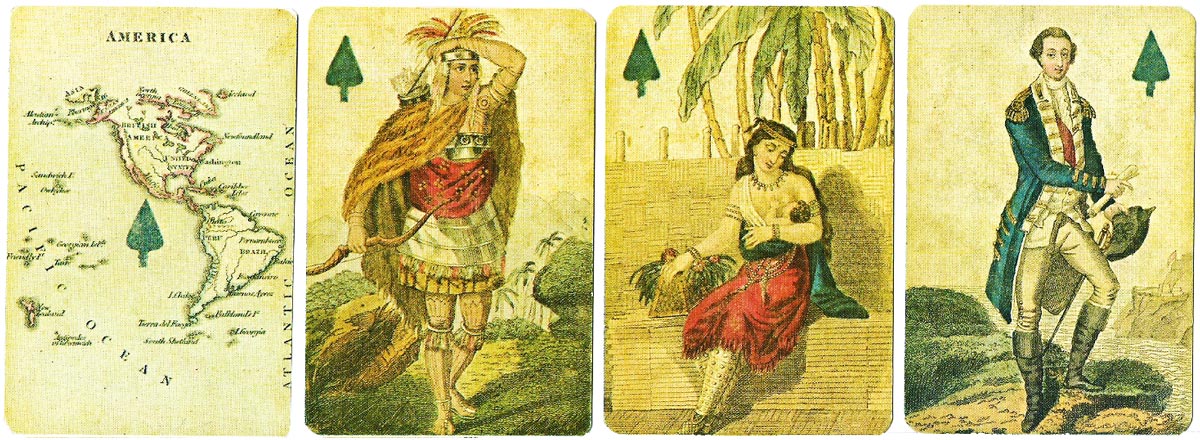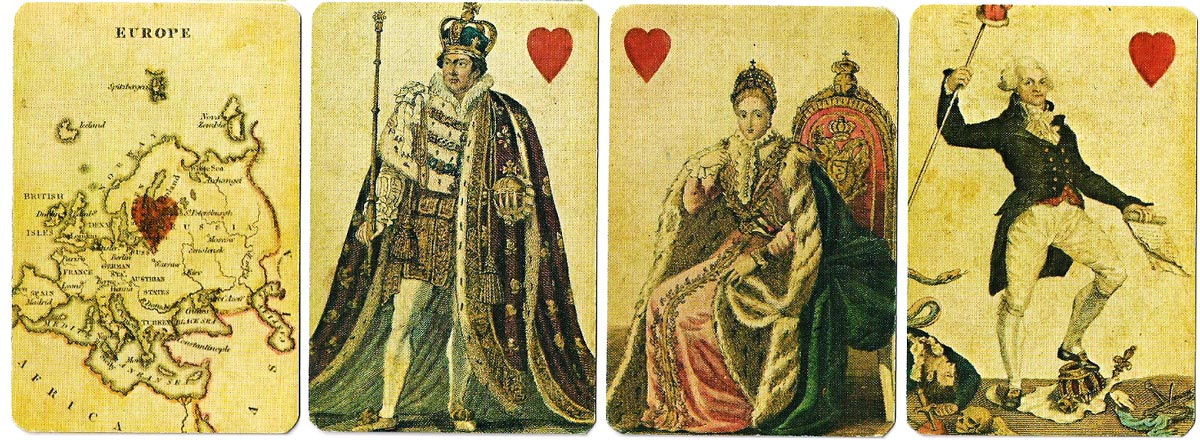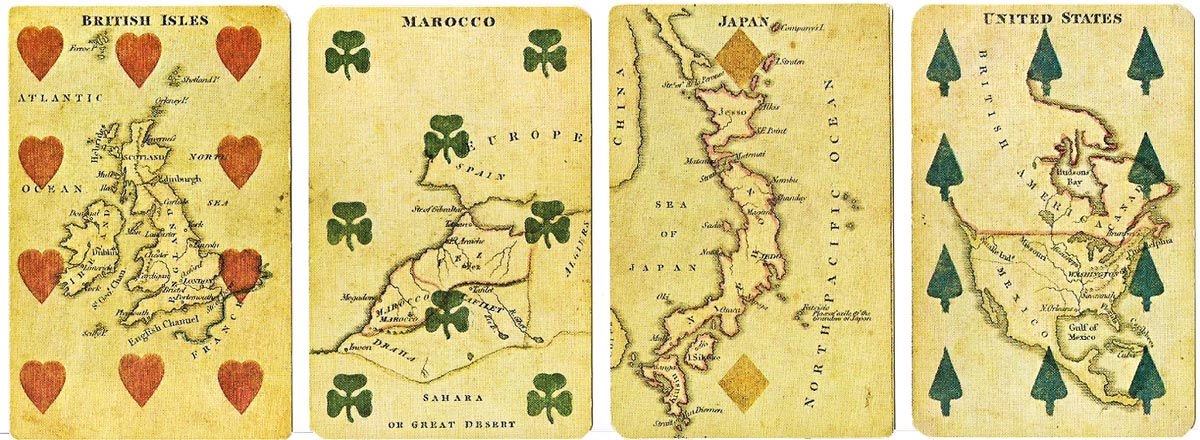Charles Hodges
Charles Hodges produced engraved geographical and astronomical decks, London, c.1827-30.
Above: Charles Hodges' Geographical cards were originally published in 1827. The Aces carry maps of the four continents; the court cards depict historical persons representing the four continents and the other numeral cards show maps of the respective countries. The aces of Spades Hearts, Diamonds and Clubs respectively represent the Americas, Europe, Asia and Africa. George Washington appears as the King of Spades and King George IV as the King of Hearts. A magnificent Chinese Emperor appears as the King of Diamonds. These maps from the numeral cards were re-used for the Astrological cards shown below. The images above are from a facsimile edition of cards in the Cary Collection at Yale University. Images courtesy Rod Starling.
Charles Hodges operated as a bookseller and stationer at 27 Portman Street, Portman Square, London, from 1825-6 until 1830. Following the tradition of engraved pictorial playing cards depicting educational, scientific and other subjects, which had its heyday in England during the 17th-18th centuries, Hodges published these Geographical and Astronomical packs starting in around 1827. The Geographical cards (shown above) were probably inspired by a pack made in France by René Janet in 1825 called “Boston de l'Univers ou Jeu des quatre parties du Monde”. The English version is believed to have been made for Hodges by Stopforth & Son in London. The Astronomical pack (shown below) was also likely made by Stopforth & Son. These are amongst the last of the finely engraved English packs as chromolithography was soon to take over.
Astrophilogeon, c.1828
Hodges' companion pack dealing with astronomy had numeral cards carrying diagrams of constellations and their pictorial representations; the court cards represent classical deities. The aim of the game was to obtain pairs of map and constellation cards from similar parts of the terrestrial and celestial globes. Information about the locality was printed at the bottom of the cards and the latitude or declination was displayed as a corner index at the top left under a large 'N' or 'S'. The maps which were used in the Geographical cards were again re-used, without any suit signs stencilled in, to complete the Astrophilogeon decks.
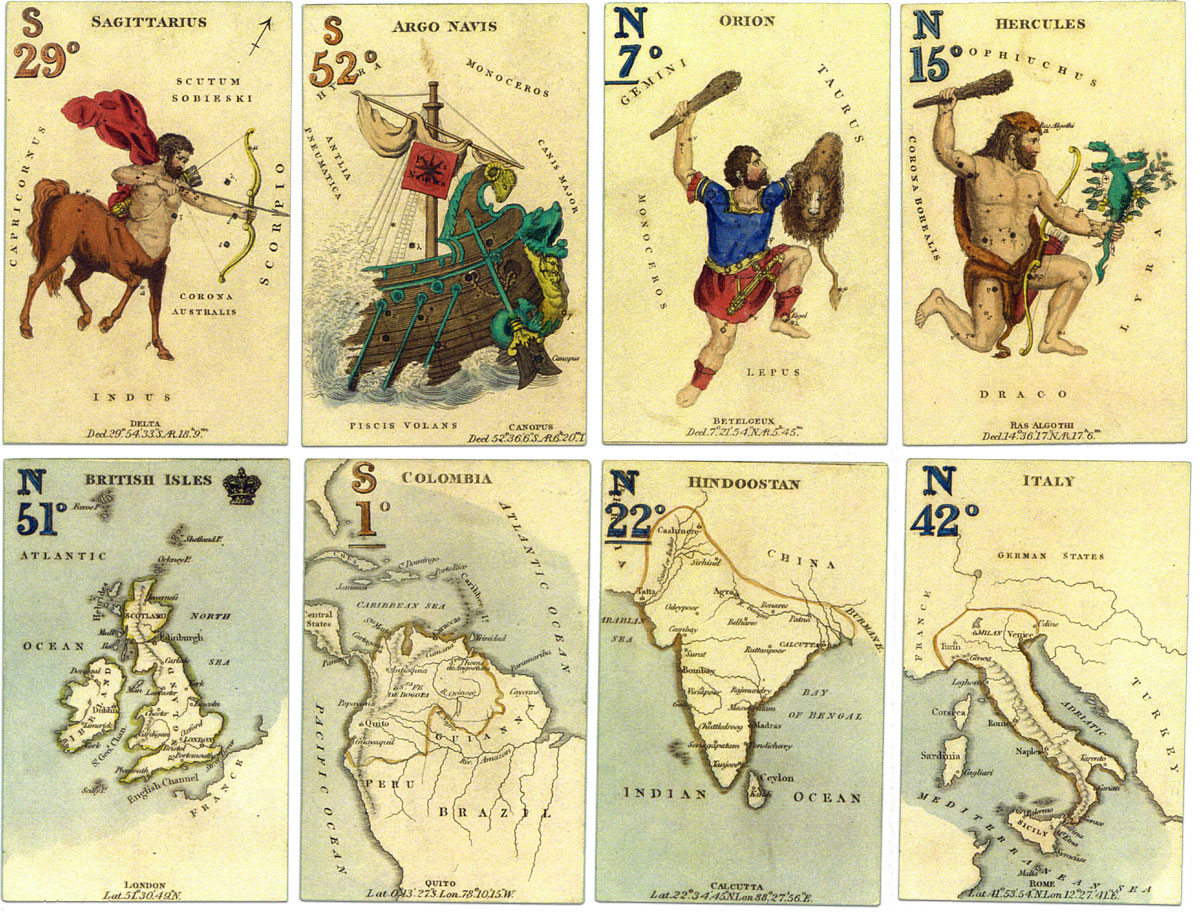
Above: Astrophilogeon, c.1828, made for Charles Hodges by Stopforth & Son. The basic aim of the game was to obtain pairs of map and constellation cards from similar parts of the terrestrial and celestial globes. The maps used in the Geographical cards with stencilled pips (below) were re-used in the Astrophilogeon decks (above) with the extra information over-printed from a second plate.
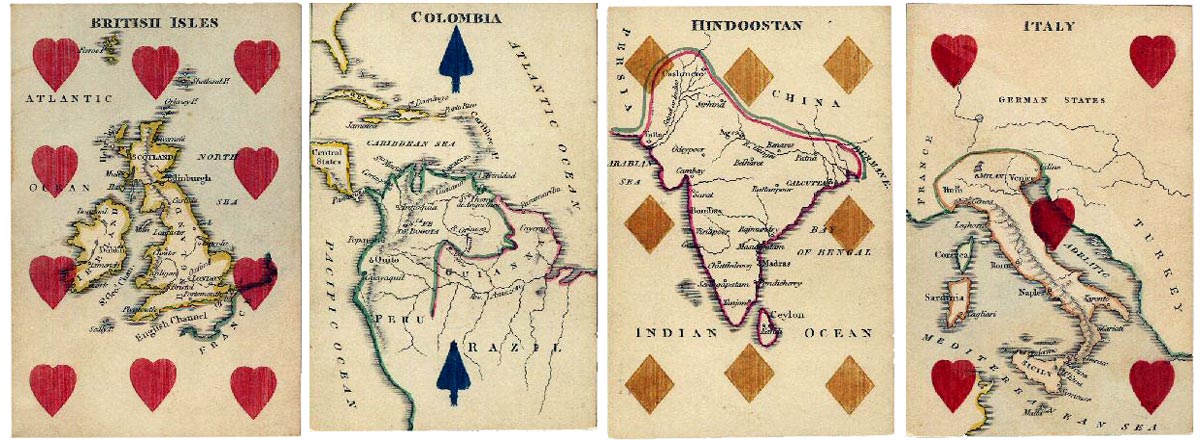
Hodges had published supplementary sets of 40 map or constellation cards with no suit signs or other information printed on them, or accompanying court cards, as New Geographical Cards and New Astronomical Cards, and was able to re-use the same plates for both his Geographical and Astrophilogeon decks with the additional information over-printed from separate plates or stencils. After Hodges ceased trading in c.1830 the packs were re-issued in 1838-9 by William and Henry Rock possibly, at first, using the same plates but subsequently moving to lithographic printing.
REFERENCES
Berry, John: Hodges' Artful Dodges, in "The Playing-Card", vol.30, no.2, Sept/Oct 2001.
Mann, Sylvia: All Cards on the Table, Jonas Verlag/Deutsches Spielkarten-Museum, Leinfelden-Echterdingen, 1990
See also: Robert Morden's Map cards, 1676 • Knavery of the Rump, 1679 • Arms of English Peers, 1688 • Mechanical instruments, c.1700 • Marlborough's Victories, 1707 • Fortune-Telling Cards, c.1714 • South Sea Bubble, 1720 • The Beggar's Opera, 1728 • Cries of London, 1754 • Transformation Cards, 1811 • Imperial Royal pack, 1828

By Simon Wintle
Member since February 01, 1996
Founder and editor of the World of Playing Cards since 1996. He is a former committee member of the IPCS and was graphics editor of The Playing-Card journal for many years. He has lived at various times in Chile, England and Wales and is currently living in Extremadura, Spain. Simon's first limited edition pack of playing cards was a replica of a seventeenth century traditional English pack, which he produced from woodblocks and stencils.
Trending Articles
Popular articles from the past 28 days
Related Articles
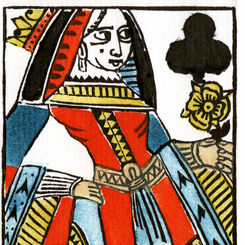
Woodblock and Stencil Queen of Clubs
A limited edition art print of the Queen of Clubs 1984 woodblock joker.
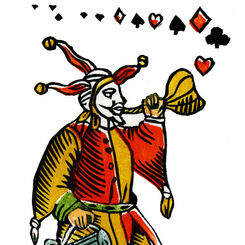
Woodblock and Stencil Joker
A limited edition art print of the 1984 woodblock joker.
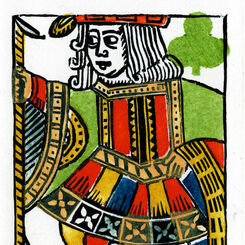
Woodblock and Stencil Jack of Clubs
A limited edition art print of the Jack of Clubs 1984 woodblock joker.
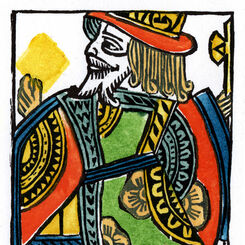
Woodblock and Stencil King of Diamonds
A limited edition art print of the King of Diamonds 1984 woodblock joker.
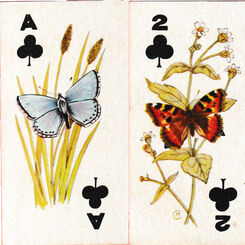
Sweetule Natural History cards
Small cards featuring natural history subjects, given away with packets of sweet cigarettes.
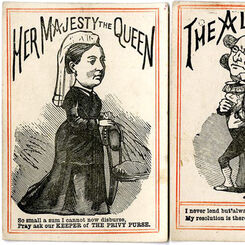
Lend Me Five Shillings
or “Her Majesty’s Privy Purse” - a merry round-the-table game published by D. Ogilvy.
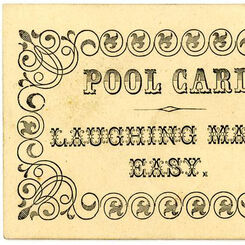
Laughing Made Easy
a Victorian card game published by D. Ogilvy.
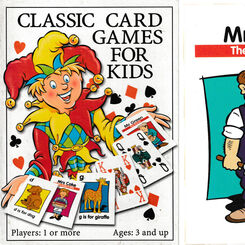
Classic Card Games for Kids
A boxed set of playing cards, Happy Families and an alphabet pack with rules for 22 games.
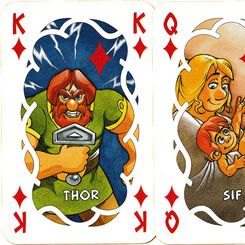
Valhalla spillekort
Characters from the Valhalla comics, designed by Peter Madsen, as commemorated on a Danish stamp.
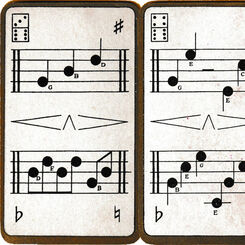
So-Lah – A Game of Music
An early 20th century domino-type musical card game by Goodall.
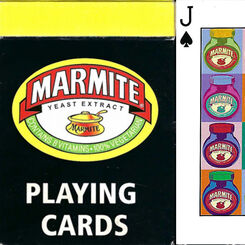
Marmite
Fifty-Four images celebrating a UK savoury spread, that has been around one hundred and twenty two y...
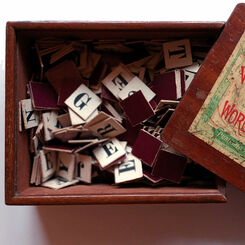
Word Making and Word Taking
How crossword and spelling games became popular.
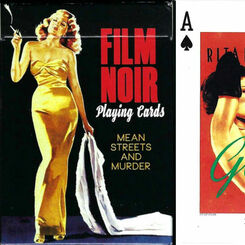
Film Noir
A deck of 55 cards, celebrating hard boiled heroes, wise-cracking women, mean streets, guns and gums...
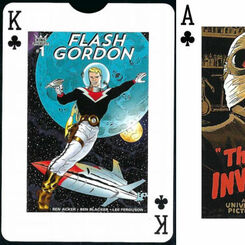
Science Fiction
A deck of 55 cards, celebrating a time when Science Fiction truly was, Science Fiction.
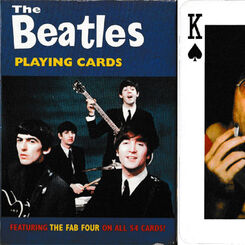
The Beatles playing cards
Two packs featuring photos of The Beatles issued by the same publisher in 2004 and 2005.
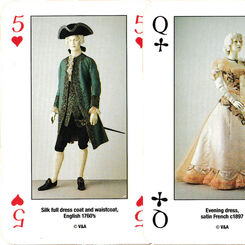
Costume Playing Cards
Four centuries of costumes from the Costume Court at the Victoria and Albert Museum.
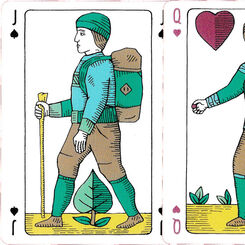
Commoners playing cards
Created by Ian Cumpstey dedicated to the common land and the countryside.
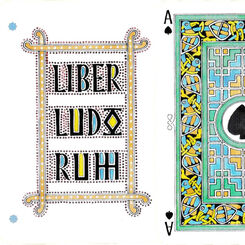
Liber Ludorum
Liber Ludorum playing cards created by Ian Cumpstey in the insular style, United Kingdom, 2019.
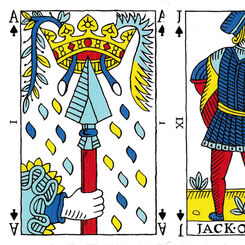
Pike and Clover playing cards
Pike and Clover playing cards created by Ian Cumpstey, Cumbria, UK, 2018.
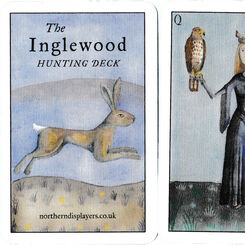
Inglewood Hunting Deck
Inglewood Hunting Deck created by Ian Cumpstey, United Kingdom, 2023.

Pin-Ups
A deck of 55 cards celebrating a golden age of cheeky, naughty, bold and curvy ladies in film.
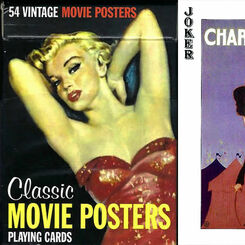
Classic Movie Posters
A deck of 55 cards presenting vintage classic movies and their stars.
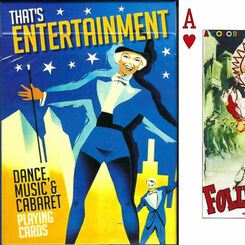
That’s Entertainment
A deck of 55 cards celebrating 20th Century vaudeville, musicals and cabaret.
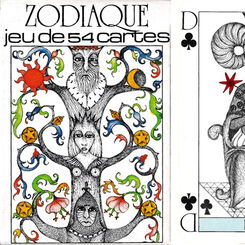
Zodiaque
“Les Signes du Zodiaque” playing cards designed by Youdi des Aubrys.
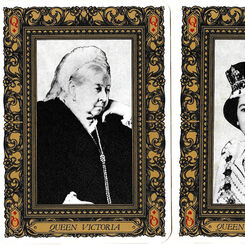
British Monarchs
Commemorating the royal wedding of Charles, Prince of Wales to Lady Diana Spencer on the 29th
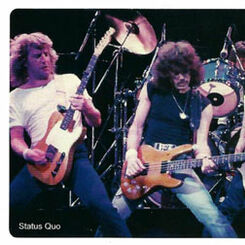
Rock & Pop Legends
Stunning photos of a selection of US and UK music artists.
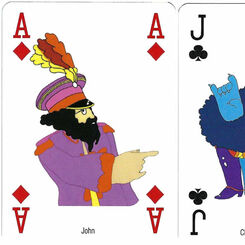
The Beatles • Yellow Submarine
A colourful deck celebrating the 1968 animated feature film based on the Lennon/McCartney song of th...
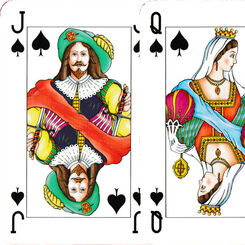
Dutch Court playing cards
Games & Print Services’ version of the Dutch pattern.
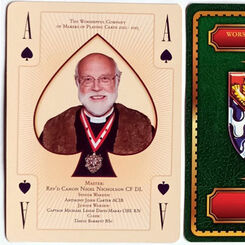
Past Masters’ Association Presentation Pack
The Worshipful Company of Makers of Playing Cards Past Masters’ Association Presentation Pack, 2013....
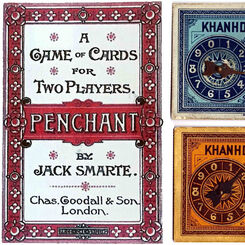
The Search for New Games in the late 19th century
A few new games survived and are still around today; most came and went and are only witnessed in th...
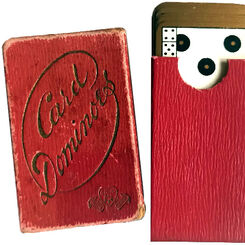
Miniature Card Dominoes
A miniature set of Goodall domino cards (5.9 x 3.5 cms) still in perfect condition.
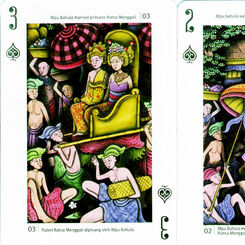
Calon Arang • Калон Аранг - Бали
Calon Arang, a figure from 12th-century Javanese and Balinese folklore known as a witch skilled in b...
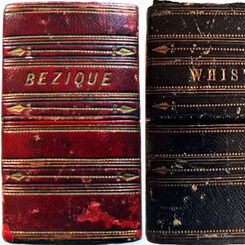
T. Drayton & Son
Bezique and Whist boxed sets by T. Drayton & Son, London, c.1875.
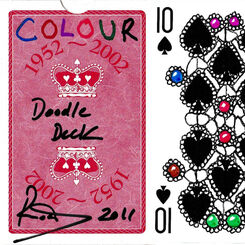
Colour doodle deck
“1952-2002 commemorative deck” customised with doodles by an uncredited artist, UK, 2011.

Safety playing cards
Safety playing cards designed to reinforce the “Think and Be Safe” concept.
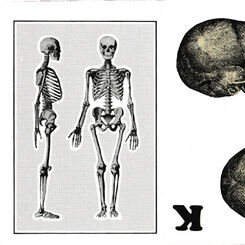
Carte Osteologiche
Skulls and bones of all descriptions have become the suits and pips in this 40-card pack from Italy....
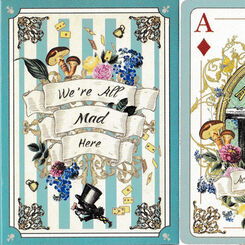
Alice in Wonderland: we’re all mad here
Alice in Wonderland themed playing cards, UK, 2020.
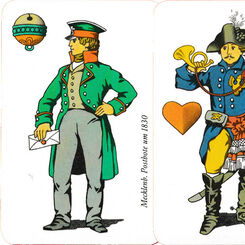
Postgeschichte
A celebration of different postal systems in Germany from 1630 to 1850, with designs by Volker Hartm...
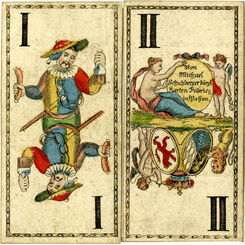
Mythological tarot by Michael Schatzberger
Mythological tarot by Michael Schatzberger, Passau, Bavaria, early 19th century.
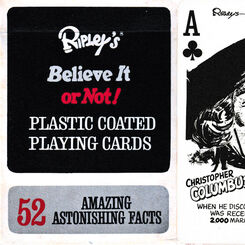
Ripley’s Believe It or Not! playing cards
Strange facts from Robert Ripley’s ‘Believe It or Not’ books, in the form of cartoons.
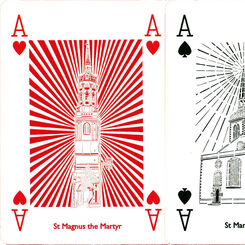
Wren 300 playing cards
Papercuts by Chloe Campbell of the 52 Wren churches in the City of London.
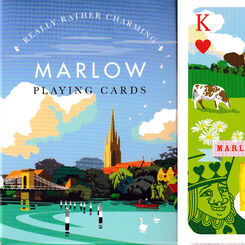
Marlow playing cards
Visitor attractions and businesses to be found in Marlow, Buckinghamshire.

Playing Politics 2010
“Playing Politics ’10: With no expenses spared” featuring caricatures by Oliver Preston, published b...
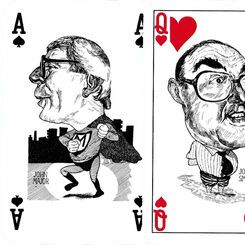
Playing Politics ’92: Pack of lies
Playing Politics ’92: Pack of lies with caricatures by Grant Robertson, UK.


